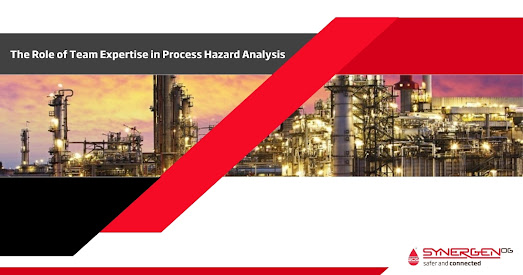The Role of Team Expertise in Process Hazard Analysis
Conducting a Process Hazard Analysis (PHA) is pivotal in safeguarding operations within any industry that deals with hazardous chemicals or complex procedures. This critical evaluation helps identify, assess, and mitigate potential hazards. However, the success of a PHA largely hinges on the composition and expertise of the team tasked with this analysis. Let’s explore how team expertise plays a crucial role in ensuring a thorough and effective PHA.
The Importance of Team Composition in PHA
The right blend of professional insights and industry knowledge can significantly elevate the effectiveness of a PHA. Each team member brings a unique perspective, contributing to a comprehensive understanding and evaluation of the process hazards.
Defining Scope and Objectives
Importance: Setting clear and precise goals for the PHA.
Expert's Role: Experts help delineate the boundaries of the analysis, tailoring it to specific operational needs.
Assembling the Team
A multidisciplinary team should include:
Process engineers to understand the technical intricacies.
Operational staff who are familiar with day-to-day activities.
Safety professionals versed in risk management and legal compliance.
Identifying Hazards
Technicians and Engineers: Pinpoint operational and mechanical failures.
Safety Officers: Highlight procedural discrepancies that could pose risks.
Conducting an Effective PHA with Expert Teams
Systematic Hazard Identification
A thorough hazard identification process, influenced by team expertise, sets the stage for effective risk management. Experience in similar industrial settings allows team members to foresee potential issues that might not be immediately obvious.
Risk Assessment
Risk assessment combines technical understanding with practical exposure. Key components include:
Likelihood Estimation: Experts use historical data and industry experience.
Consequence Analysis: Specialized knowledge helps predict outcomes of potential events.
Developing and Implementing Controls
Innovative solutions often stem from experienced professionals who understand the subtleties of the system being evaluated. These controls are influenced by both past incidents and technological advancements.
Review and Update
Continuous improvement in PHA practices is crucial:
Updates: Reflect changes in operations or regulations.
Feedback Loop: Incorporates lessons learned from past PHAs and near misses.
Common PHA Methodologies and the Need for Expertise
Hazard and Operability Study (HAZOP)
Requires a detailed understanding of process design and operational deviations. Process engineers and operational staff play critical roles here.
What-If Analysis
Broad knowledge base and creative thinking are necessary to envisage potential deviations and their consequences.
Failure Modes and Effects Analysis (FMEA)
Demands deep technical knowledge about each component's role and potential failure modes.
Layer of Protection Analysis (LOPA)
Safety experts assess the effectiveness of existing safety layers and propose additional mitigation measures if necessary.
Other Methods
Fault Tree Analysis (FTA) and Event Tree Analysis (ETA): Require analytical skills to trace potential failures and predict their impacts.
Bow Tie Analysis: Visual methodology that benefits from the clarity and organizational skills of the team.
Checklist-Based and Hazard Identification (HAZID): Utilize comprehensive checklists developed through expert consensus to ensure no potential hazard is overlooked.
Conclusion
The influence of a well-rounded, knowledgeable team in conducting a Process Hazard Analysis cannot be overstressed. Each member’s expertise not only contributes to identifying and mitigating risks but also ensures that the PHA is compliant with regulatory standards and adapted to industry best practices. Organizations should therefore prioritize assembling teams that reflect a broad spectrum of skills and experiences to guarantee a robust and effective hazard analysis process. Remember, in the realm of PHA, every bit of expert input can be the difference between a regular operational day and a catastrophic event.
------------------------------------------------------------------------------------------------------
Read more on process hazard analysis - https://synergenog.com/conduct-process-hazard-analysis-methods/
SynergenOG – Process Safety Consultant
.jpg)

.jpg)

Comments
Post a Comment